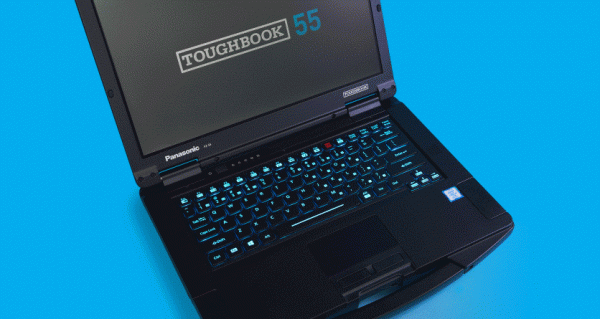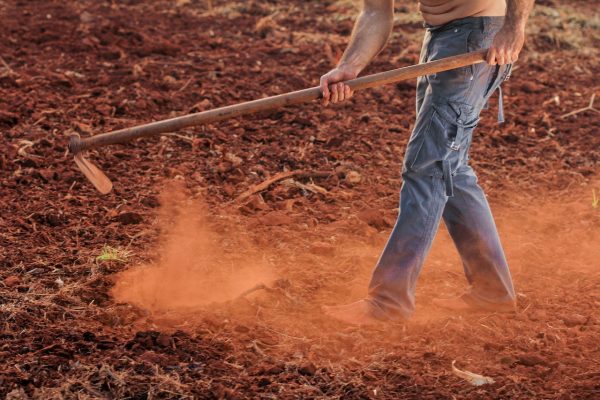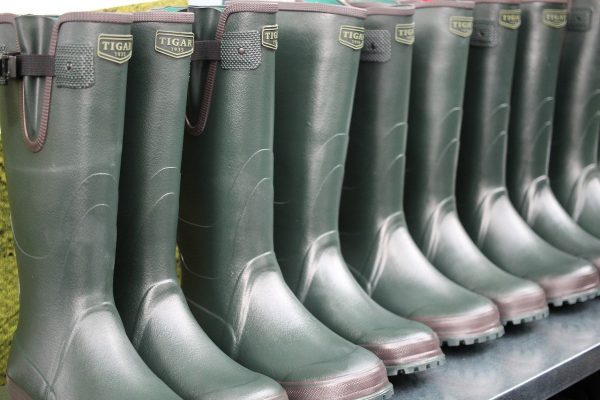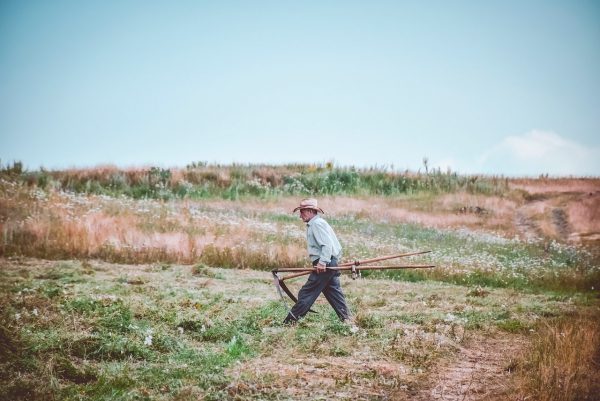Last Updated on January 10, 2023
Do you own a small farm and are looking for the perfect tractor? Here is our guide to help you choose the best tractor for a small farm based on what you are going to use it for.
Introduction
If you own a small farm then you know how important it is to have the right tools. And one essential farming tool that is hard to live without is a tractor.
But with so many options available these days, you’re probably wondering what size and type of tractor do you really need for your small farm.
The current tractor market has a wide range of options that can make choosing one an overwhelming task. This article focuses specifically on the small farm tractor sizes and features that will hopefully help you have a clear understanding of what kind of tractor you should buy for your small farm.
What’s the Right Tractor Size for a Small Farm?
The tractor size that you choose will depend on your farm size and what you plan on using the tractor for. If you own a small farm, then you probably don’t need a full-size tractor like commercial farmers use.
Instead, a sub-compact, compact, or mid-size tractor is probably all you need. With that being said, let’s dive into each of these tractor sizes and what they can be used for.
Lawn and Garden Tractors
A lawn tractor is typically the smallest tractor and is designed specifically for mowing. They typically come with a fuel capacity of 2-3 gallons and smaller tires that are designed to work best on your lawn.
Even though they primarily serve as mowers, you can find some that work with a few attachments for other purposes.
Garden tractors are similar to a lawn tractor but typically come with different tires for better traction and a fuel capacity of around 5-6 gallons. They typically have more horsepower than a lawn tractor and some are even four-wheel drive.
They don’t have a three-point hitch but they still have more attachments than lawn tractors do.
If you have a very small farm or a micro farm, this this type of tractor may be all you need. However, most small farm owners need a tractor that fits into the next two categories.
Sub-Compact Tractors
The sub-compact tractors group represents the smallest size utility tractor you can buy. They typically have less than 25 horsepower, Cat-0 three-point hitches, and power take-off (PTO) connections which gives you access to a wide array of attachments.
One of the best things about a sub-compact tractor their front-end loaders. These typically have somewhere around a 500 lbs. rating which may be all you need depending on what you plan on moving around with it.
For light duty farm work, these tractors are great. But if you need greater lift capacity and more pulling power, you’ll probably need to go with a compact utility tractor or a mid-size tractor instead.
Compact Utility Tractors & Mid Size Utility Tractors
The compact utility tractor and mid-size tractor category represents the best tractors for all-round small farm work. They are more heavy-duty than sub-compact tractors and will probably tackle anything you need to do on your small farm.
Most of these tractors typically have between 25 and 65 horsepower, a 2-4 cylinder diesel engine, 4WD, and powers take-off (PTO) connections. They typically have Cat-1 and Cat-2 hitches.
Because of this, they can utilize front-end loaders that have a much higher rating and a wide range of rear attachments like bush hogs, box blades, grader blades, plows, discs, rototillers, augurs, and much more.
They also have a lot more pulling power than a sub-compact which you may need for pulling wagons or other attachments around your farm.
The type of tractor that I personally own and use on my farm falls into this category and it can pretty much tackle anything I need it for. This includes things like bush hogging my fields, hauling dirt, mulch, and rocks around with the front end loader, hauling water totes and feed with pallet forks, and pulling wagons and mobile chicken coops around.
If you’ll be using your tractor for similar tasks then look for a tractor that fits into this category.
Full Size Utility Tractors
This class of tractors are built for heavy-duty farm work which means they are probably overkill for a small farm. They typically start at around 80 horsepower and are designed for commercial farming applications.
These tractors have everything a commercial farmer would need like power take-off capabilities, a 3 point hitch, 4WD, but again, are probably too big for what you need on a small farm.
If you aren’t row cropping or haying a large amount of acreage then you should stick with a compact or mid-size tractor.
What Features to Consider for Your Small Farm Tractor?
Now that you have an idea about the different tractor sizes, let’s dive into their features. Each tractor comes with different specifications so you need to be familiar with what each one is and does.
Here are some of the critical features you should consider when buying a tractor.
What type of engine does it have?
Does the tractor that you are considering buying have a gas or diesel engine? Gas engines have a tendency to stall out under heave workload where diesel engines don’t.
Diesel engines are also more durable than gas engines and typically last a lot longer.
The downside to a diesel is that they can sometimes be harder to start on a very cold winter day. But even with that being said, I highly recommend getting a tractor with a diesel engine.
Is the Tractor 4WD or 2WD?
Four-wheel drive (4WD) tractors provide better traction and greater pulling power compared to two-wheel drive (2WD) tractors. They are great to have when the ground is wet or if your farm has hilly terrain. They also work much better in the snow.
Although two-wheel drive tractors are still available, most modern tractors will be four-wheel drive. If you have a choice though, I highly recommend getting a four-wheel drive tractor.
What type of three-point hitch does it have?
A three-point hitch is a triangular-shaped hitch found at the rear of the tractor and is used for attaching implements. The tractors you will be looking at will most likely have Cat-0, Cat-1, and/or Cat-2 hitches.
Most small farm tractors support Cat-1 so check to make sure they are compatible with any implements you have or are planning on getting.
What type of power take-off or PTO does it have?
The power take-off or PTO is a spinning shaft located at the rear of the tractor and is used for attaching implements that need engine power to work. Some tractors have mid-PTO connections underneath for attachments like belly mowers.
There are mainly three types of PTO. These are transmission, live, and independent PTO.
Transmission PTO is the oldest type and relies on the tractors transmission to work. This type is not preferable because when the tractor is taken out of gear or the clutch is engaged, the PTO stops providing power to your equipment.
Live PTO is another type that is typically controlled by a two-stage clutch. If you press the clutch half way down, you can still shift gears or stop the tractor but the PTO will continue to provide power to your equipment. If you fully press the clutch then the PTO will stop providing power.
Independent PTO is the newest type of PTO that is simply controlled by an on/off switch or lever and will continue to provide power to the equipment regardless if the tractor is in gear or not.
What type of Transmission does it have?
Modern tractors typically have two types of transmissions: a hydrostatic transmission or a manual transmission.
Hydrostatic transmissions are becoming more popular because of how easy they are to use. They require no shifting in the traditional sense but rather utilize a hand control or foot pedal that adjusts the speed of the tractor.
Larger tractors and older tractors typically still have a manual transmission where changing gears requires using the clutch.
Tractor Features Explanation Video
If you want to have a better understanding of each of these features then I highly recommend watching this video. It does a great job of going over the different features of a tractor and how to operate them.
What to Look For When Buying a Used Tractor
If you want to save money and are shopping for a used tractor, I highly recommend watching this video on how to buy a good used tractor. It is probably the most thorough video that I’ve found on this topic and you will feel much more confident in your tractor buying journey after watching it.
Where to Buy a Used Tractor
If you want to search for tractors that are for sale by owner, the first two places I recommend checking are Facebook Marketplace and Craigslist.
I also recommend checking TractorHouse.com and Equipment Trader. Both of these sites allow you to sort by tractor type, features, and location.
You can also check with local tractor dealers who resale used tractors. These will typically cost more than tractors that are for sale by owner but may provide you with a little more peace of mind since you will be working with a dealer.
Where to Buy a New Tractor
If you are in the market for a new tractor then you can start with major manufacturers like Kubota and John Deere. Both of these manufacturers have a great reputation and a long history of building good tractors.
They also have a great selection of compact utility tractors with tons of features. And if you need to lease or finance your new tractor, they will help you with that as well.
Most larger cities in the US have local dealers for both of these brands which makes it easy to shop for them in person and get them repaired if you have a problem.






